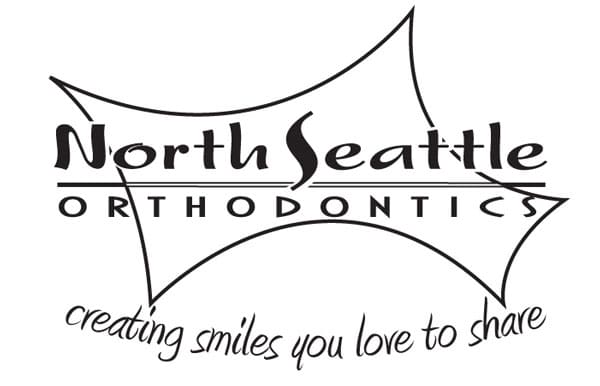Orthodontists estimate that up to 75% of people could benefit from braces to fix either functional or aesthetic issues. It’s far easier to move teeth in childhood, so when your teen has all of their adult teeth grown in and they’re mature enough to care for their oral health, they’re ready for braces.
Getting braces for teens is exciting, but it’s also scary. Not all teens are ready for it. We’re here to help.
Read on for some practical advice surrounding braces for teenagers.
How to Prep Your Teen for Braces
While many teens would benefit from braces, and most would be happier after their smiles were straightened, you may find that your teenager isn’t exactly willing to pay a visit to the orthodontist upon your first suggestion.
Many teens feel self-conscious as-is, and the idea of wearing braces may make them anxious. They don’t want to stand out any more than they already do, and they may feel as though braces will make them “uncool.”
Of course, if your teen isn’t ready for braces, they should have some say in the matter. However, it is a good idea to get them sooner rather than later. Teeth are far easier to move the younger the patient is.
Here are a few tips that can help you prep your teen for braces and make them more open to the idea.
Everyone Is Doing It
Your teen may feel resistant to the idea of having braces because they don’t want to stand out. For teenagers, being a part of a crowd is everything (even for teens who are notably counter-culture). They want to stand out, but only on their own terms.
It can be helpful to remind your teen of just how common teen braces are in comparison to adult braces. Yes, adult braces are growing in popularity, but it’s not at all unusual to be a child or teenager with braces. As a matter of fact, many of your teen’s friends likely already have or had braces.
It can be even more convenient if you can time your teen’s braces with their friends’ orthodontic treatments.
Mention Health Benefits
So what if your teen isn’t concerned with fitting in? In that case, start bringing in the health benefits of getting braces.
Many teens are under the impression that braces and other types of orthodontic treatments are only for aesthetic purposes, but this couldn’t be further from the truth. Overcrowded teeth can cause health problems.
When teeth are too close together, they can be challenging to clean. This can result in cavities and gum disease, among other things. Gum disease can lead to further health problems.
Your teen likely has all of their adult teeth, so they have to take care of them!
It’s Faster and Easier Than Ever
Many teens may not be aware that orthodontic treatment isn’t as difficult or time-consuming as it’s been in the past. While some people who face extensive bite problems or misalignments may need braces for a long time, updated orthodontic technology has dramatically shortened treatment times.
If your teen knows that their braces can be off by major events like prom or graduation (provided you start early enough), they may be more willing to start.
Choosing Types of Braces for Teenagers
So what type of orthodontic treatment is right for your teenager? We offer several different options so you and your teen can make the right decision.
Here’s a quick rundown. You can discuss the details with your orthodontist if you’re not sure which option would be best for your teenager.
Metal
Metal braces are the most common and “traditional” type of braces. When someone thinks about orthodontic treatment, they likely think of metal braces.
They consist of metal brackets that are bonded to the front of the teeth and connected by wires and rubber bands. They’re super effective for correcting a wide range of dental issues, including overcrowding, misalignment, and even complex bite problems.
While they’re durable and can withstand significant force, they’re also the most noticeable type of braces, which may be offputting to teens.
Ceramic
Ceramic braces are similar to metal braces, but they use tooth-colored or clear ceramic brackets instead of metal ones. This makes them blend in more naturally with teeth. They’re less noticeable than metal braces, making them a popular choice for teens who want a more discreet orthodontic treatment option.
Ceramic braces are just as effective as metal braces for straightening teeth and correcting bite issues.
Invisalign Clear Aligners
Invisalign is a modern type of orthodontic treatment that uses a series of clear, removable aligners to move the teeth into their desired positions over time. The aligners are custom-made for each patient.
Invisalign aligners are almost invisible when worn, so they’re a popular choice for teens who don’t love the idea of visible braces. They’re also removable, so patients can eat, drink, brush, and floss normally during treatment. However, they must be worn for at least 22 hours a day.
Must-Have Items to Have on Hand
If you have a teen getting ready for orthodontic treatment, it’s a good idea to have a few things on hand. These will vary depending on the type of treatment your teen is getting, so it’s always good to get extra advice from your orthodontist.
Orthodontic wax is a must-have at first. It will protect your teen’s gums from wires, brackets, and attachments that can get painful. You may also want to have some oral anesthetic gel as well as over-the-counter pain relievers, especially for check-up days.
A travel toothbrush (and toothpaste) is another must-have so teens can brush at school. Teens with Invisalign may also want a spare retainer case so they can have an eye-catching place for their aligners when they eat lunch.
Time to Start Orthodontic Treatment
Starting braces for teenagers can be exciting and scary at the same time. If your teen is ready to start their journey toward straight teeth, it’s time for a visit to the orthodontist!
At North Seattle Orthodontics, we offer orthodontic treatment for older children, teens, and adults. We’d love to meet your teen to find the perfect treatment option for them.
Reach out to schedule a consultation today.

